News Update
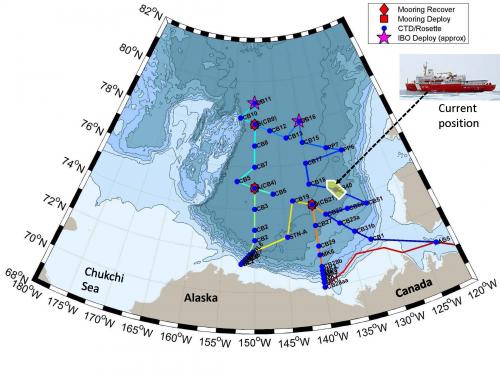
Chemistry Timeout
So let's talk some more about carbon dioxide. In the previous discussion we established a plausible explanation for how carbon dioxide molecules could interact with water molecules thereby forming a solution where the carbon dioxide is the solute and water is the solvent (as it usually is). The next piece of this is the formation of the carbonate ion a very stable polyatomic ion composed of 3 oxygen atoms, 1 carbon atom, and having a charge of –2 symbolized: CO32-
The reaction for this goes like this: CO2 + H20 ––> H2CO3 It is the CO3 part of this that is the carbonate ion. So when you drink a carbonated beverage much of what you are drinking is carbonate ion in solution. Next time we'll get into what happens to the carbonate ion.
Crew Member Focus
Raelene Kerrivan is a Steward 1 aboard the Louis St. Laurent. She lives in St. John's, Newfoundland, one of the biggest cities in the province. She has a 25 year-old son who works in the construction industry in St. John's. 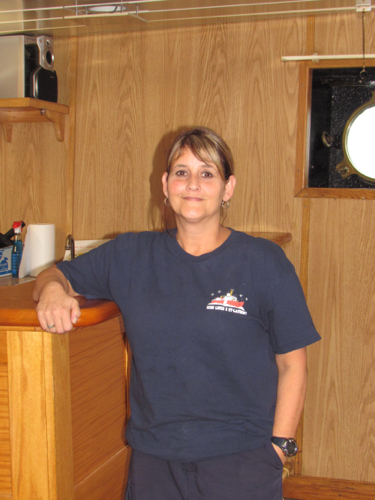
Geo-engineering Methods to Improve Arctic ClimateThe average weather over a particular region of the Earth. Climate originates in recurring weather phenomenon that result from specific types of atmospheric circulation. (Warming 2)
This material is from archives of the Arctic and Antarctic Research Institute (AARI) and was recently provided by AARI deputy director, Dr. Igor Ashik. Some of this information was also published in the magazine "Popular Mechanics" (No. 1, January 2016).
In 1966, the State Soviet Union Committee for Science and Technology considered a project of the engineer Eugene Pastors, the description of which recently surfaced in the archives of the AARI. Starting from the concept of Borisov (see yesterday’s dispatch), the author proposed to tow or push the ice cover from the Arctic to the south by powerful vessels/icebreakers. "... If you enter into the ice of the central Arctic about 20-25 powerful ships, ordering some of them to push ice toward Fram Strait into the Atlantic Ocean, and part toward Bering Strait into the Pacific Ocean ... then the ice cover will be removed from the Arctic in six months" wrote Pastors in his proposal. He argued that his project would be much cheaper than Borisov’s one because ships pushing the sea ice toward the Atlantic Ocean via Fram Strait would work in a concert with natural forces (winds and ocean currents) under which the sea ice naturally moves to the Greenland Sea and North Atlantic (light blue arrows in Photo 8) and melts there.
The refined scientific concepts do not abolish the temptation to think big. Projects to "correct" the climate are emerging in our days. Tomorrow, we will focus on one of the recent Arctic climate geo-engineering ideas showing how to cool down the Arctic climate fighting its unprecedented warming during last two decades.
Expedition Photos
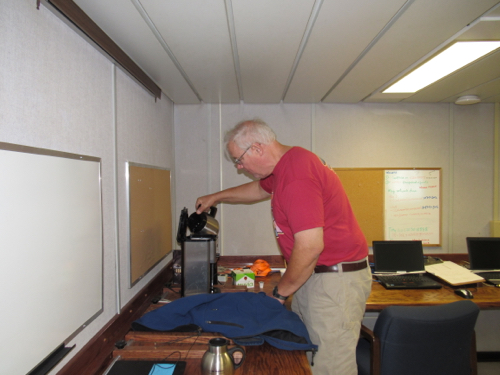
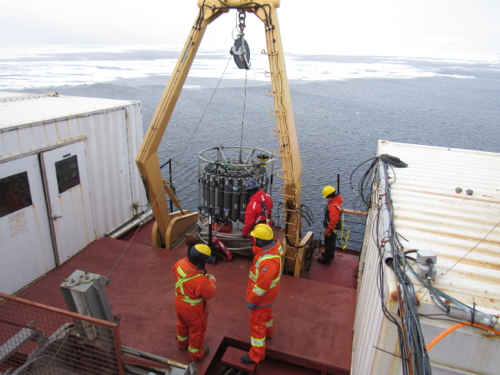

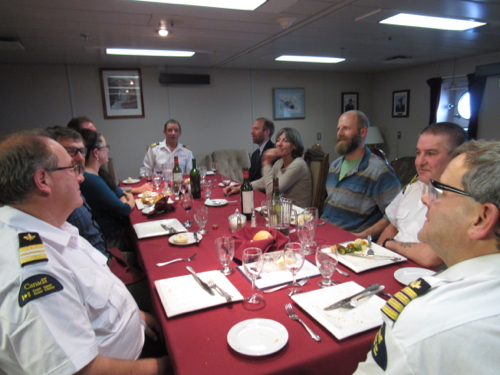
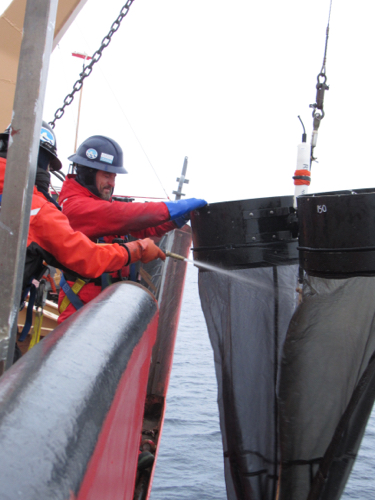
Following is a schematic showing how sea ice could be removed from the Arctic Ocean using icebreakers to push ice toward the Atlantic and Pacific Oceans. Moving slowly, they would push ice out of the Arctic Ocean mechanically. In the warm waters of the Atlantic and Pacific Oceans, the ice would melt quickly. Twenty-five icebreakers would be needed and in 6 months all ice would be pushed out from the Arctic. Prepared by Andrey Proshutinsky.



Comments